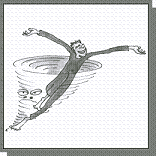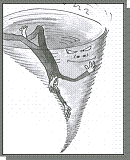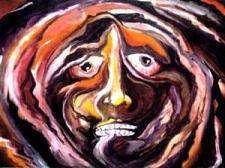 In a previous post, we looked at the vicious cycle of anxiety, in which an anxiety-provoking event triggers an anxiety-related thought, feeling, behaviour or physiological symptom, which generates additional anxious thoughts, feelings, behaviours and physiological symptoms.
In a previous post, we looked at the vicious cycle of anxiety, in which an anxiety-provoking event triggers an anxiety-related thought, feeling, behaviour or physiological symptom, which generates additional anxious thoughts, feelings, behaviours and physiological symptoms. One of the keys to overcoming anxiety is break this cycle before it begins to gain momentum. We often don’t have control of our initial response to an anxiety-provoking situation, but once we become aware that something has triggered an anxiety-related thought, feeling, behaviour or physiological symptom, then we can choose how we react. Mindfulness, and congitive behavioural therapy (CBT) or cognitive therapy, are effective ways to help you stop these cycles before they can build.

 According to the cognitive behavioural therapy (CBT) approach to anxiety, one of the reasons that overcoming anxiety can be so difficult is that anxiety generates vicious cycles involving your physiological, cognitive, behavioural, and emotional domains. We looked at these
According to the cognitive behavioural therapy (CBT) approach to anxiety, one of the reasons that overcoming anxiety can be so difficult is that anxiety generates vicious cycles involving your physiological, cognitive, behavioural, and emotional domains. We looked at these  Cognitive behvioural therapy (CBT), sometimes called cogntive therapy, is a type of thereapy that focuses on how various factors within us and our environment interact with each other to to produce and maintain many issues that people struggle with such as anxiety and depression.
Cognitive behvioural therapy (CBT), sometimes called cogntive therapy, is a type of thereapy that focuses on how various factors within us and our environment interact with each other to to produce and maintain many issues that people struggle with such as anxiety and depression.